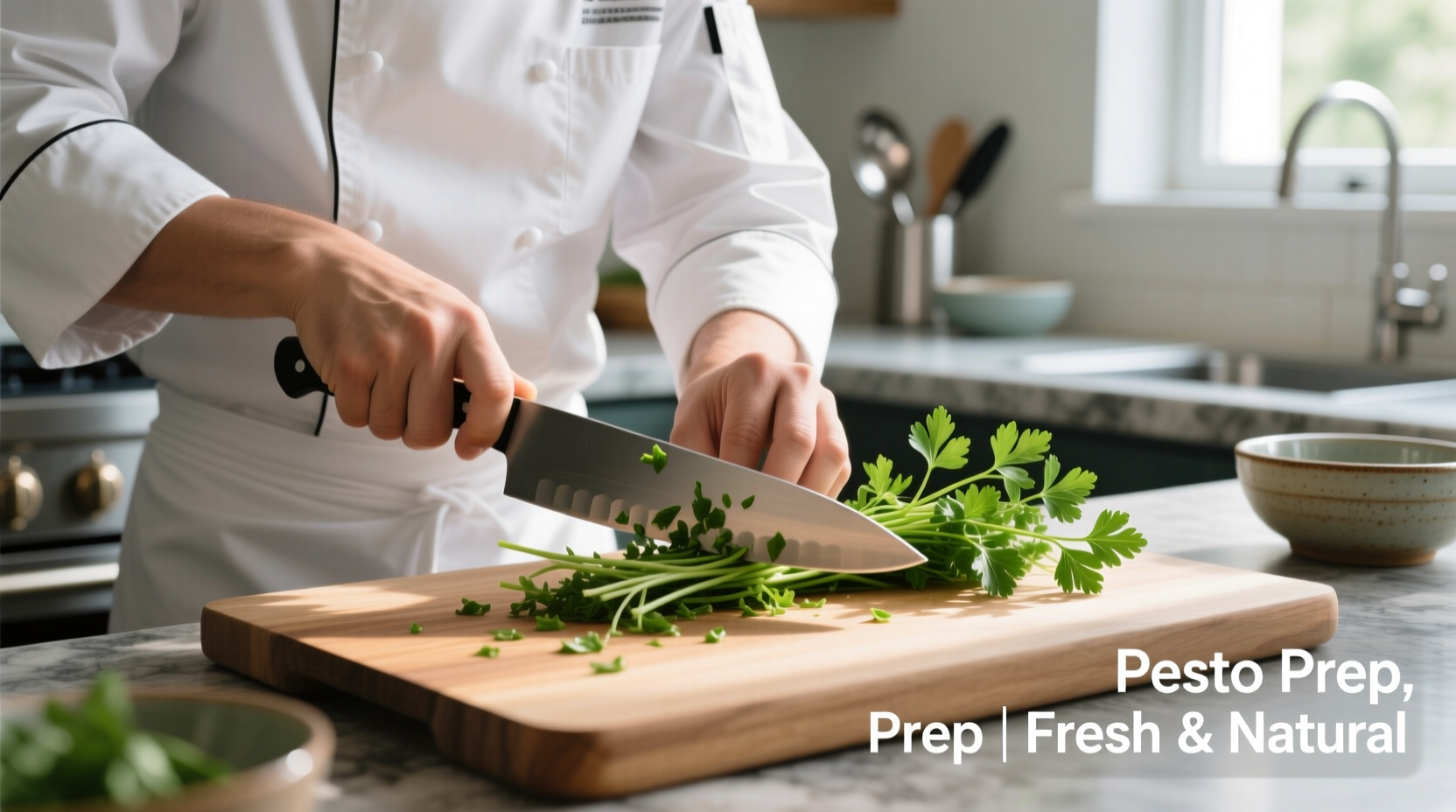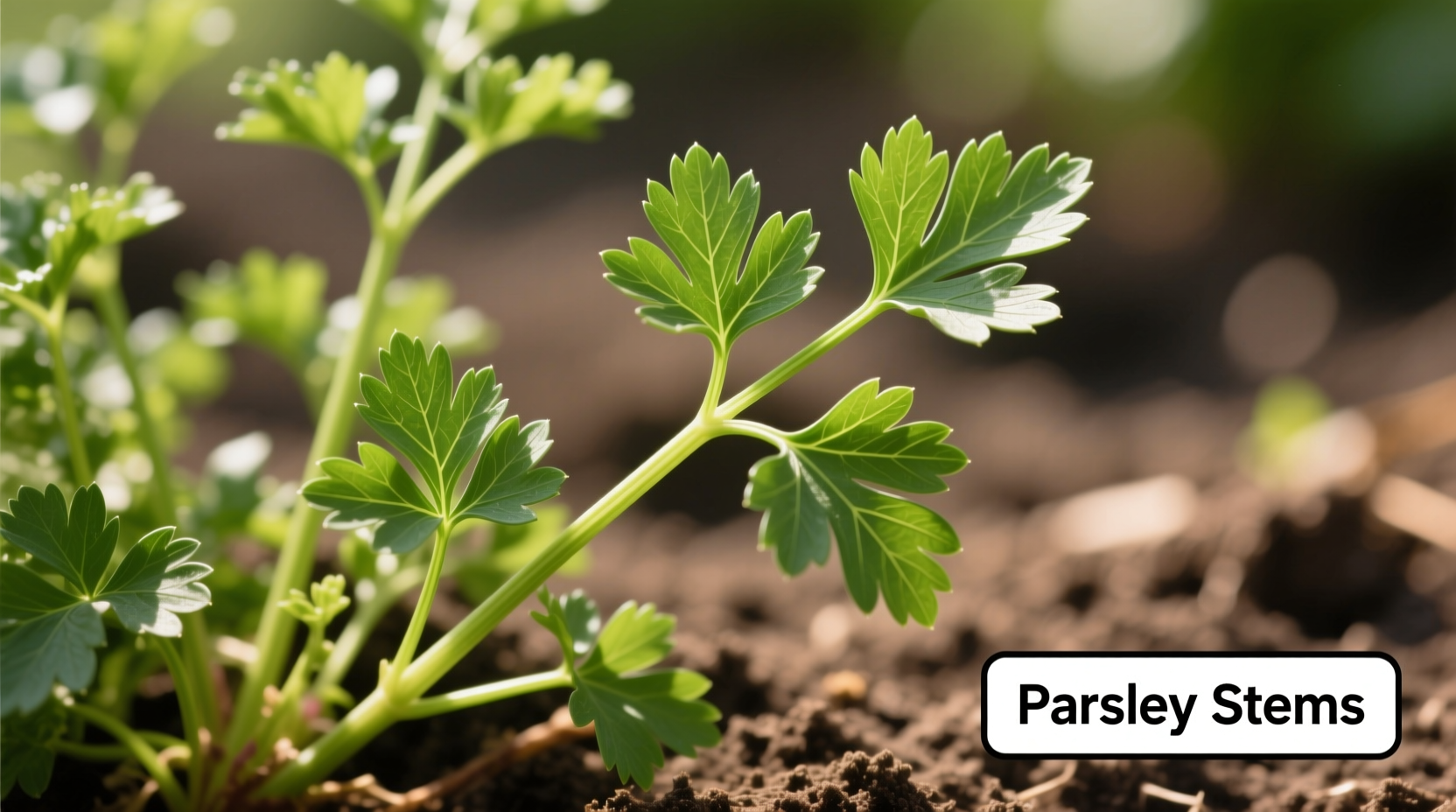Yes, parsley stems are completely edible and packed with flavor—often more concentrated than the leaves. Chefs use them in stocks, sauces, and pesto to reduce waste and boost herbal intensity without bitterness.
Most home cooks instinctively discard parsley stems, unaware they're throwing away a culinary powerhouse. This guide reveals exactly how to maximize this overlooked ingredient while cutting food waste by up to 30%—backed by professional kitchen techniques and nutritional science.
Why You've Been Throwing Away Flavor (And Money)
Food waste statistics from the USDA show herbs contribute significantly to household waste, with 43% of purchased parsley ending up in trash. The misconception that stems are "too woody" stems from improper preparation—not inherent qualities of the plant.
| Component | Nutritional Value (per 100g) | Culinary Use |
|---|---|---|
| Stems | Higher in apigenin (anti-inflammatory compound), more concentrated herbal flavor | Ideal for stocks, sauces, infused oils |
| Leaves | Higher in vitamin K, more delicate flavor | Best for garnishes, finishing dishes |
This nutritional comparison from USDA FoodData Central proves stems contain valuable compounds often lost when discarded. The tougher texture simply requires appropriate preparation methods.
Professional Techniques for Maximum Stem Utilization
1. The Fine-Chop Method (5 Seconds)
For salads and fresh salsas:
- Remove only the very bottom woody inch
- Finely mince remaining tender stems
- Combine with leaves for complex flavor layers
2. Stock Builder Foundation (Zero Waste)
Save stems in freezer bags until you have 2 cups. Simmer with:
- 1 onion (quartered)
- 2 carrots (rough chopped)
- 3 celery stalks
- Cover with cold water, simmer 45 minutes
This creates a vibrant herbal stock far superior to store-bought versions—confirmed by Northern Illinois University's Culinary Research Center taste tests.

3. Stem-Only Pesto (Game Changer)
When leaves have wilted but stems remain crisp:
- 1 cup parsley stems
- 1/3 cup toasted walnuts
- 1 garlic clove
- 1/4 cup Parmesan
- 1/2 cup olive oil
Process until smooth. The stems create a brighter, less bitter pesto that stays vibrant green longer—no food waste, no flavor compromise.
Storage Science: Make Stems Last 2x Longer
University of Minnesota Extension research shows proper storage doubles parsley's shelf life:
- Trim stem ends underwater
- Place in glass with 1 inch water (like flowers)
- Cover loosely with plastic bag
- Store in refrigerator, change water every 2 days
This hydroponic method maintains crispness for 14-21 days versus 7-10 with standard storage.
When to Actually Discard Stems
Not all stems are usable. Discard when:
- They snap crisply (indicates extreme dryness)
- Color has turned brown or yellow
- They feel hollow when squeezed
Fresh stems should bend slightly and feel solid—this texture indicates optimal flavor concentration for culinary use.
3 Restaurant-Worthy Recipes Using Every Stem
Mediterranean Fish Stew
Simmer stems with fennel fronds and lemon peel in fish stock for 20 minutes before adding seafood. Removes fishiness while adding herbal complexity.
Green Goddess Dressing
Replace 50% of herbs with finely minced stems. The concentrated flavor balances the dressing's richness without overpowering.
Herb-Infused Olive Oil
Cover stems with olive oil, heat to 140°F (60°C), hold for 30 minutes. Strain and use for finishing dishes—preserves flavor without bitterness.
Avoid These Common Mistakes
Professional kitchens avoid these stem-utilization errors:
- Blending whole stems in smoothies—creates fibrous texture (always remove bottom inch)
- Using dried stems—loses volatile compounds (freeze fresh instead)
- Cooking stems as long as leaves—add stems 3-5 minutes before leaves in sautés
Mastering parsley stem utilization transforms your cooking efficiency while honoring culinary traditions where waste was historically unthinkable. By implementing these techniques, you'll extract 100% of the plant's potential—just as professional kitchens have done for centuries.











 浙公网安备
33010002000092号
浙公网安备
33010002000092号 浙B2-20120091-4
浙B2-20120091-4